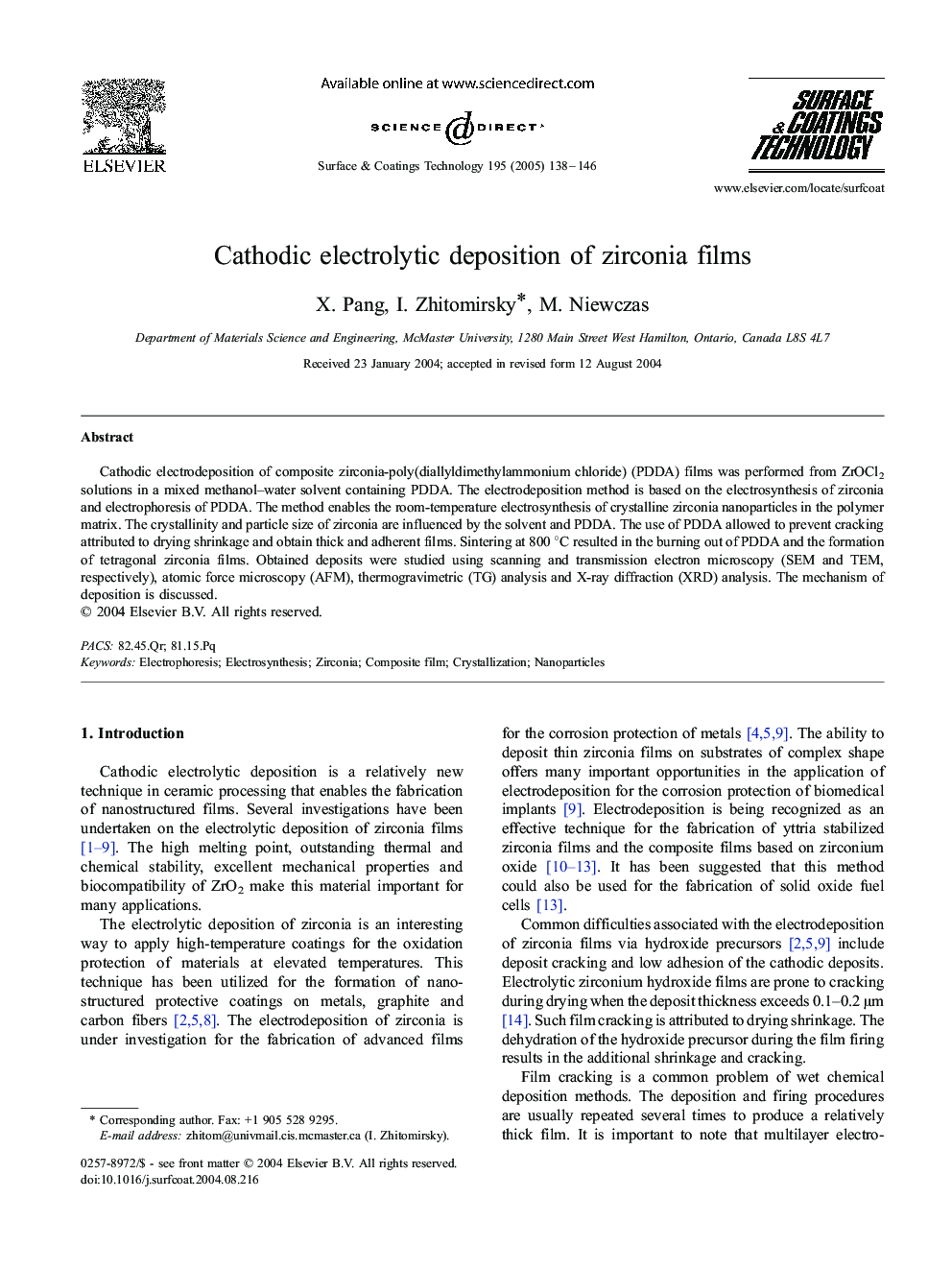| Article ID | Journal | Published Year | Pages | File Type |
|---|---|---|---|---|
| 9809737 | Surface and Coatings Technology | 2005 | 9 Pages |
Abstract
Cathodic electrodeposition of composite zirconia-poly(diallyldimethylammonium chloride) (PDDA) films was performed from ZrOCl2 solutions in a mixed methanol-water solvent containing PDDA. The electrodeposition method is based on the electrosynthesis of zirconia and electrophoresis of PDDA. The method enables the room-temperature electrosynthesis of crystalline zirconia nanoparticles in the polymer matrix. The crystallinity and particle size of zirconia are influenced by the solvent and PDDA. The use of PDDA allowed to prevent cracking attributed to drying shrinkage and obtain thick and adherent films. Sintering at 800 °C resulted in the burning out of PDDA and the formation of tetragonal zirconia films. Obtained deposits were studied using scanning and transmission electron microscopy (SEM and TEM, respectively), atomic force microscopy (AFM), thermogravimetric (TG) analysis and X-ray diffraction (XRD) analysis. The mechanism of deposition is discussed.
Keywords
Related Topics
Physical Sciences and Engineering
Materials Science
Nanotechnology
Authors
X. Pang, I. Zhitomirsky, M. Niewczas,
